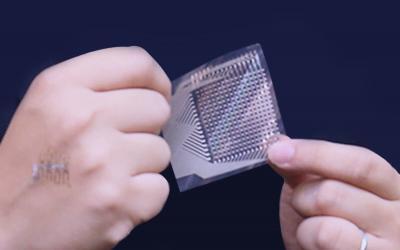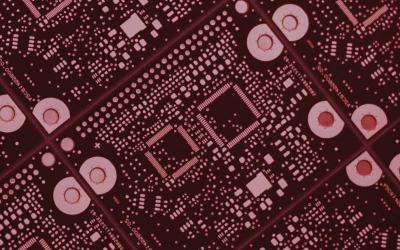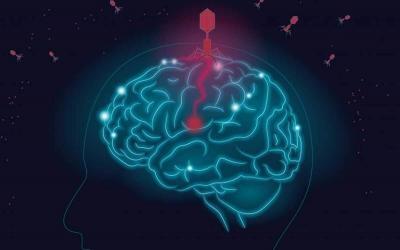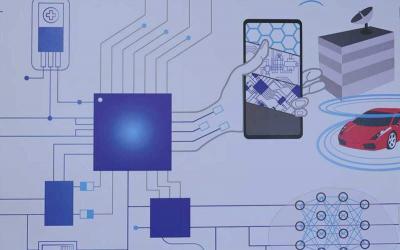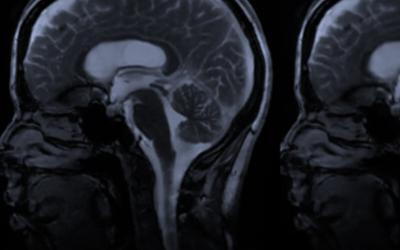Cleanroom Industry News
Realtime Flexible Sensor Tests and Cures Inflammation
Realtime Flexible Sensor for Healing HKU Engineering and Medicine collaborate and develop a real-time flexible sensor that makes inflammation testing and curing 30 times faster Different from the inorganic counterparts like silicon, organic semiconductors can operate...
Smart Bandages Monitor and Tailor Treatment for Chronic Wounds
Smart bandages designed to monitor and tailor treatment for chronic wounds Smart Bandages with integrated pH and temperature sensors and electronically triggered drug release are designed to improve healing A team of engineers led by Tufts University has developed a...
Boron Arsenide Crystals Could Help Computer Chips Keep Their Cool
UT Dallas physics researchers recently published a study in the journal Science that describes the high thermal conductivity of boron arsenide crystals they grew in the lab. From left: study authors Xiaoyuan Liu, Dr. Bing Lv and Dr. Sheng Li.
Quantum Transistor for Semiconductor Applications Enables Photon Computing
Quantum computers will need analogous hardware to manipulate quantum information. But the design constraints for this new technology are stringent, and today’s most advanced processors can’t be repurposed as quantum devices. That’s because quantum information carriers, dubbed qubits, have to follow different rules laid out by quantum physics.
Osteoarthritis Pain Eased by Graphene Foam Suggested by Research
Boise State researchers believe graphene foam-enhanced cartilage could one day be used to treat the joint pain caused by osteoarthritis as well as prevent the need for joint replacement. Osteoarthritis is incurable and affects half the U.S. population over the age of 65.
Neural Network Recognizes Molecular Handwriting
Researchers at Caltech have developed an artificial neural network made out of DNA that can solve a classic machine learning problem: correctly identifying handwritten numbers. The work is a significant step in demonstrating the capacity to program artificial intelligence into synthetic biomolecular circuits.
Alzheimer’s Disease Study Suggests Viral Beginnings
More than a century after its discovery, no effective prevention or treatment exists for this progressive deterioration of brain tissue, memory and identity. With more people living to older ages, there is a growing need to clarify Alzheimer’s disease risk factors and disease mechanisms and use this information to find new ways in which to treat and prevent this terrible disorder.
Computer diagnoses Parkinson’s with behavioral tracking
Thousands of people do not know they have Parkinson’s disease. Eric Horvitz wants them to be able to find out — before the incurable neurodegenerative disorder progresses to its later stages. In his perfect world, they wouldn’t have to interrupt their daily routines. They could stay in their homes and offices, working on their computers, and their online activity would eventually trigger a message: A visit to the doctor is in order.
The beating brain: A video captures the organ’s rhythmic pulsations
A study recently published in the journal Magnetic Resonance in Medicine and co-authored by Stanford life-science research assistant Itamar Terem, then-postdoc Samantha Jane Holdsworth, PhD, (now at the University of Auckland) and several other Stanford colleagues describes a new imaging method that, by means of a kind of strobe-action amplification technique, is able to visually blow up the minute heartbeat-induced pulsations of the brain to produce mind-boggling video sequences such as the one you’ve hopefully taken a peek at here.
Nanoscale Kirigami Technique Could Enable Microchip-Based 3-D Optical Devices
Nanoscale Kirigami has taken off as a field of research in the last few years; the approach is based on the ancient arts of origami (making 3-D shapes by folding paper) and kirigami (which allows cutting as well as folding) but applied to flat materials at the nanoscale, measured in billionths of a meter.
ISO Class 4 Microelectronics Cleanroom Completed for NexLogic Technologies, Inc.
NexLogic Technologies, Inc. has announced the completion of its International Standards Organization (ISO) 14644-1 Class 4/10,000 and the equivalent Federal Standard 209E (FS209E) Class 10 clean room as an integral part of its new microelectronics services and manufacturing capability.
Decernis Acquires Food Fraud Database from USP
The Food Fraud Database, launched by USP in 2012, helps food manufacturers, retailers, and other stakeholders make informed decisions about the vulnerability of their food ingredients to economically motivated adulteration. This supports compliance with FSMA and GFSI requirements by providing information on the pattern and history of food fraud and the identification of potentially hazardous adulterants.
